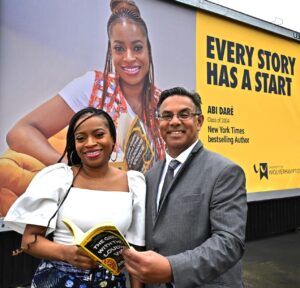Pride Month 2022: Inclusivity in The Classroom

Pride Month is a great time to celebrate the triumphs achieved by the LGBTQIA+ community – but as well as getting stuck into the revelry and rainbow flags, it’s important to acknowledge the steps we still need to take. When so much of our young lives are spent in classrooms (virtual or otherwise), it’s important to feel represented and included.
There’s a responsibility for teachers, tutors and mentors to actively help foster these types of environments. As such, MyTutor unveils through Steph Acaster, a psychology, maths, and science tutor on MyTutor, how educators can create inclusiveness and belongingness in education, which can create an incredibly positive effect on both academic learning and mental wellbeing.
The benefits
LGBTQIA+ inclusivity benefits all students, regardless of their sexual orientation or gender identity. For some, it means validation of their feelings or experiences, or a safe space to express themselves. For others, it means gaining a more balanced understanding of the people around them. Thankfully, it’s not challenging or time-consuming to change our approach to lessons to increase inclusivity and bring these benefits to students.
Inclusive introductions
A first step for tutors who communicate with students and their guardians, can be simply not assuming that every student has “mum and dad” at home. Allowing students to introduce themselves and any family members that you’ll be in contact with, and saving them from the awkward feeling of having to correct an adult’s assumption about them is an easy step to take that can make a great difference for some students.
It can also be useful to include your pronouns (e.g. “I use she/her pronouns” or “my pronoun is she/her”) when meeting someone new, even if you are cisgender or you think your pronouns might be obvious based on your name. This can help to normalise sharing pronouns for everyone, and allows trans and gender diverse students to feel safe and welcomed when they would like to include their pronouns.
Representation in the (virtual) classroom
Tutors can also improve inclusivity and representation in lessons, contributing to a world where LGBTQIA+ people and relationships are normalised, rather than seen as being entirely separate from daily life and tasks.
Small changes can make a big difference. For many subjects, such as Maths, English, Psychology, and Foreign Languages (any time when using scenarios to set up an activity), tutors can include a variety of characters, family structures, and gender-neutral or non-stereotypical names and situations. The focus of the activity need not be the LGBTQIA+ characters facing LGBTQIA+ related issues – but the presence of this type of variety can help LGBTQ+ students to feel that they are represented in the materials that they’re being asked to work with. It can also help other students to recognise and become familiar with, for example, families which may not match their own family structure.
In subjects like History, Art, Drama, and Sport, including the stories of LGBTQIA+ individuals and the kinds of issues faced by them, can help give context to the curriculum topics in focus, and build an awareness of “LGBTQIA+ identities” as real people who play a role in a wide range of professions.
Learning is for everyone
It’s also a good thing to acknowledge not knowing something. Just like with any other topic, if a student raises a question that you can’t answer right away, don’t avoid it! Whilst it’s best not to make assumptions or give opinions on something you’re not sure about, allowing students to see your reasoning or research into a question can be a great way to encourage them to develop an open-minded and intellectual approach to learning new things. And of course, there are plenty of sources available for you to teach yourself more if you feel like this would benefit your interactions with students or others in the wider community.
Online education brings with it the great positive of more choices than ever before, where families can choose tutors who’ll provide an inclusive learning environment, and a safe space for learning. It also means that we as tutors have great opportunities (and responsibilities) to ensure that we include and represent people from a diverse range of backgrounds in our teaching and learning environment.





